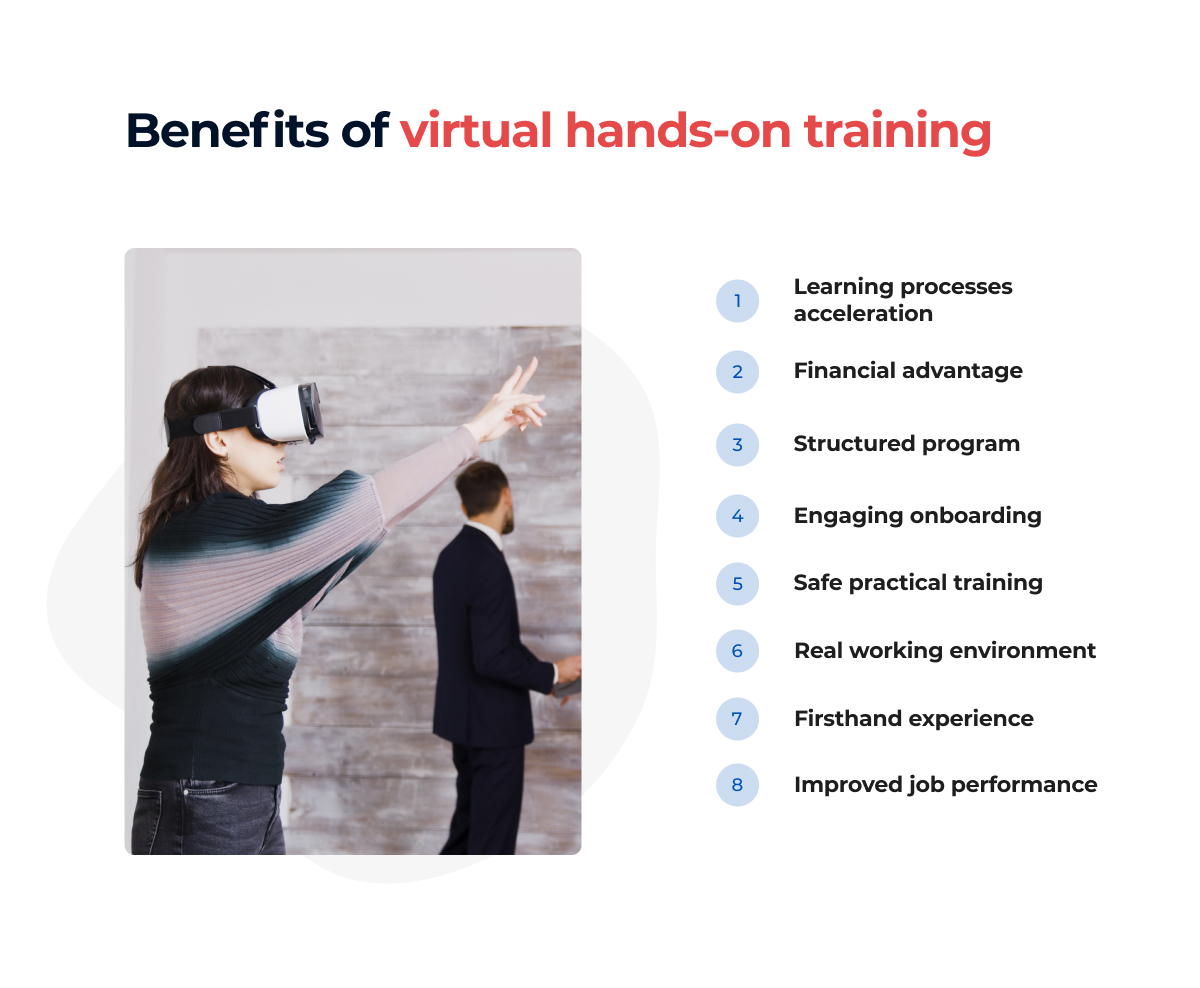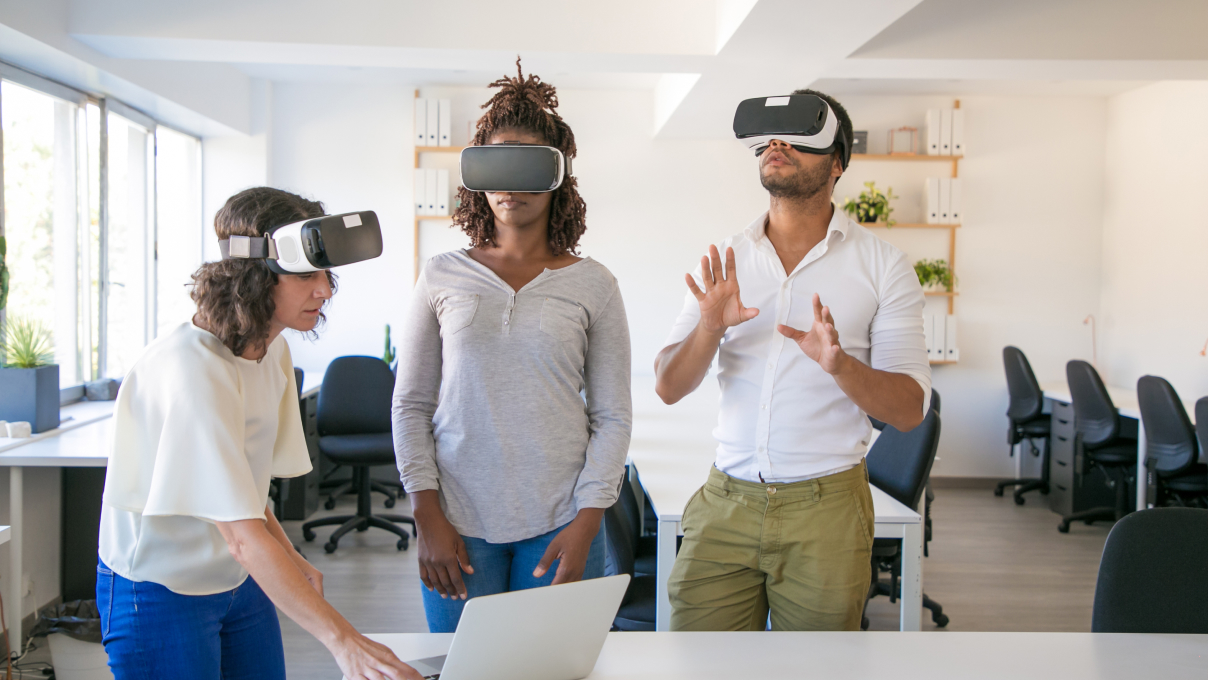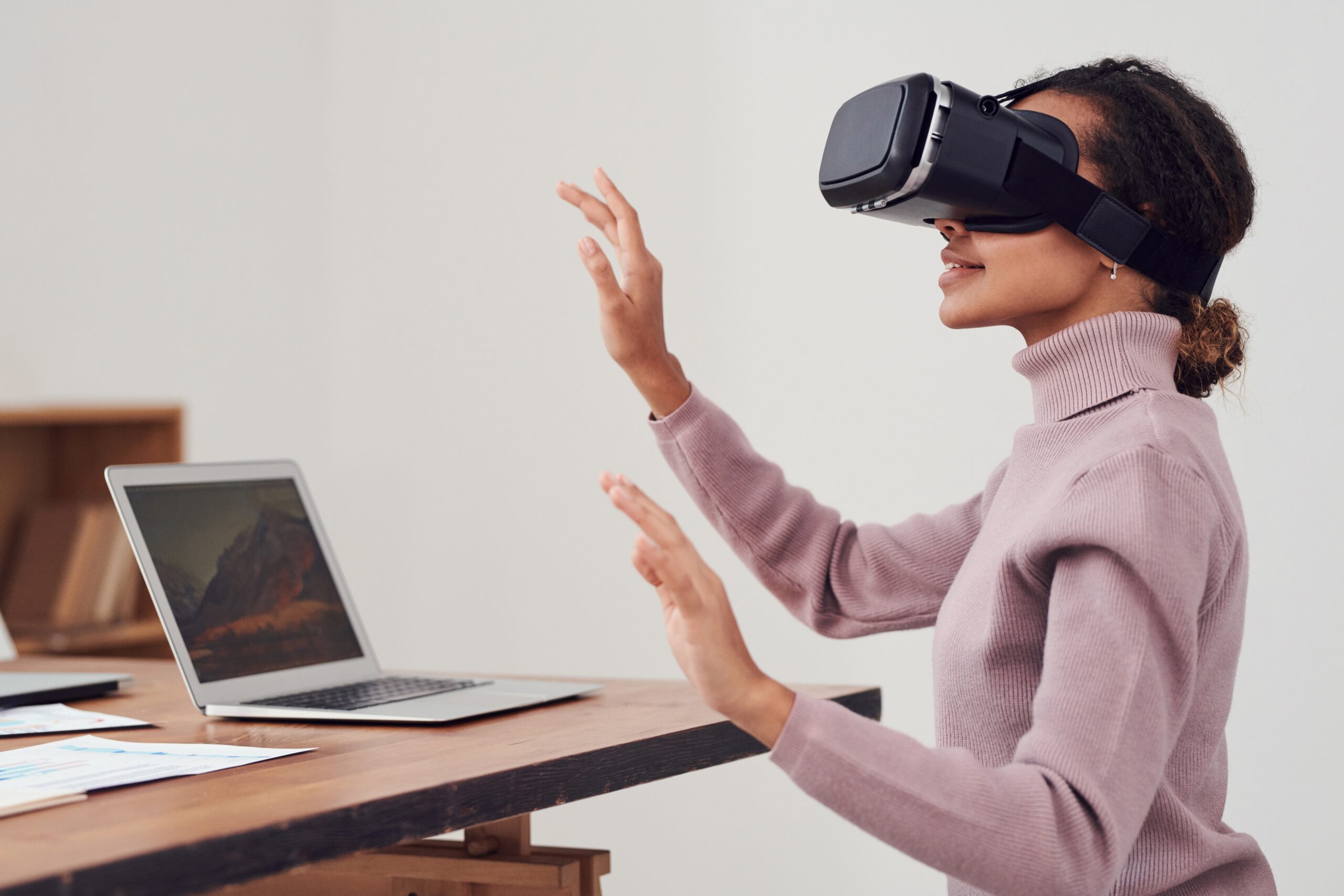On-the-job training, OJT, in short, refers to the knowledge and guidance received when preparing for a new job. The specificity of practical training is that employees acquire competencies in a real working environment. Introducing the newly hired may be carried out in a variety of forms. Companies may decide on a traditional analog approach, engaging guidebooks and experienced professionals’ supervision, or, quite the contrary, turn to the most modern digital solutions. On-the-job training is essential in professions involving physical work, power tools, specialized equipment, or software. Engaging in experiential learning in real, or close to real, conditions proves to bring much better results when compared with theoretical knowledge acquisition. Augmented Reality usage minimizes the danger significantly.
Getting outside the box
So far, the above definition was functioning as a general understanding of on-the-job training. It’s still accurate, though; along with the technological development in Virtual Reality (VR) and Augmented Reality (AR), the hands-on approach has gained new tools and expanded the area of working environments. A live-work practice is no longer thematically limited to operating machines or learning the sequence of actions. Thanks to AR/VR solutions, your employees can develop and strengthen the competencies necessary to carry out their roles and experience real-life scenarios. Later in the article, we will share some inspirational non-standard examples of on-the-job training involving AR and VR technology. You will see that the emerging training possibilities are easily applicable in multiple industries and provide streamlining solutions.
Grasping the significance of practical training
Before we move on to the real-life applications of the AI on-the-job training that might put you in awe, let’s dig deeper into the modus operandi of the hands-on approach. What makes it so effective, considering good results for various types of learners? AR/VR on-the-job training responds to all learning preferences, as it engages visual, audio, and spatial functions, activating the learner also on the practical level. Performing the activities within the real-life environment is proven to trigger the “memory palace,” a memorization technique also known as the method of loci. Thanks to experiencing the sequence of actions or putting theory into practice, the employee can recall the new knowledge easily. As it turned out, the experiential training impact extends to VR and AR setting. The University of Maryland studies have proven that experiences in a VR environment have a similar retention level to the same activities performed in the real world.
Benefits of virtual hands-on training
The positive effects of on-the-job training are hard to deny. Besides achieving the main objective, which is a successful knowledge transfer, AI technology-based training entails a number of substantial benefits. We have pointed out the most relevant ones.

- OJT accelerates the learning process by providing faster training with close to real-life experience. Thanks to the comprehensive form of knowledge transfer, on-the-job training enables quicker adaptation to a new position. In a relatively short time, trainees are capable of performing simple tasks on their own.
- With the use of AI, OJT proves to be an effective job training that may cost a fraction of the budget that would be used for creating real-world environments solely for training purposes. The financial advantage comes from fewer resources and less space required during training. The technology might seem a bit costly, but it is leveled by lower insurance costs and a significant reduction in work accidents.
- OJT works well with a structured program, a plan for a new employee to follow. The program may include checklists, tracks of tasks, or sequences of activities to learn. It is easy to set up and is very much dependent on the employer’s requirements.
- On-the-job training provides comprehensive and engaging onboarding training to new employees. The interactive method enables them to master their role swiftly, as AI solutions-based learning is appealing and increases interest in learning.
- Worksite training is more likely to retain the new knowledge. OJT can contribute to improved job performance. It also has a positive effect on the learning experience, and finally, the work satisfaction, as the engaged training can reinforce your confidence coming from gaining new competencies.
- VR training offers a safe environment while practicing the scenarios which would be dangerous to carry out in reality with inexperienced employees.
- AR training, on the other hand, takes place in a real working environment. This technology allows the new employees to safely learn through practice, as they receive step-by-step instructions in real time, and the system instantly verifies the correctness of their actions.
- Instead of a long period of shadowing other employees and completing tasks with supervision, the new employees receive firsthand experience while performing tasks related to their new role. Experts who used to devote their valuable time to educating the newly hired may now focus on their work. Their know-how was turned into OTJ training which can be used each time it’s necessary to introduce a new person to the job.
- Multiple applications of the OJT enable your employee to learn how to operate the equipment or software required for the position. The training may also include job shadowing of an experienced employee without the need to disrupt his work. In addition to gaining practical skills, AI-based OJT also facilitates learning the workplace standards, requirements and regulations.

Real-life examples that will leave you in awe
We are getting accustomed to the thought of AR and VR training at work, though we still correlate it with professions requiring operating heavy machinery or memorizing a sequence of activities. Practicing eye-hand coordination during virtual OJT rightly gained great popularity, yet we can go way beyond that scope. We have collected some inspiring examples of on-the-job training from various industries, which prove how versatile AI practical training can be. The solutions of the future are finally applicable in our present.
As it occurred, a race car driver can now prepare for a demanding route in perfectly safe conditions. Thanks to Honda trains drivers OJT facilitated by AI, a driver is able to experience the road courses and specifics of the tracks together with the whole racing experience, including environmental factors, tire grip, and aerodynamics of the vehicle. The training also enables them to practice making split-second decisions which are not a rarity in this profession.
Another great example of AI training for drivers is delivered by UPS, which “(…)utilizes VR headsets to help drivers spot potential hazards when “driving” down a virtual road. (…) Newly enrolled drivers are taught in a classroom, given demonstrations, and then put in a VR environment. Since adding the VR component, the company claims that the employee retention rate has climbed to 75 percent.”
A different set of skills is being learned at Walmart, where employees use a VR program to learn the company’s new technologies and improve customer service. Quoting Datatechvibe: “Like UPS, Walmart has seen retention rates increase once it used VR as a training tool. Test scores at its academies had risen by 10 to 15 percent when students used VR.” Apart from the regular training, Walmart employees are practicing the one-of-a-kind scenarios such as the Black Friday shopping spree.
Apart from the retail or shipment industry, there are many more diverse fields of VR training applications. Currently, an employee may practice quick thinking, rules and commands, and how to act in certain social situations specific to a given profession. VR training is gaining popularity in military and law enforcement, enabling the recruits to practice the skill and experience of being in the field before they physically get there. Another huge area benefiting from VR training is the educational segment, especially in disciplines, like medicine that require long-term internships and practice.
Streamline entry level for the new hires
Virtual Reality and Augmented Reality used to be the domain reserved for gaming; meanwhile, the AI solutions expanded the scope to employee training, which turned out to be a game changer for numerous businesses. Nowadays, you can develop your employees’ skills and competencies in a safe environment without devoting much time or expert resources. With wearable technology, you can structure the content of on-the-job training and automate the learning process for good. Monitor the progress, check in during the training if necessary, collect data reports and provide actionable feedback to your employees, addressing areas for improvement. As proven in the provided examples, virtual training is no longer a theme of the future, as it has already found application in various industries. If you’d still like to learn more about how to streamline processes with the use of AI, you might find this e-book interesting.










